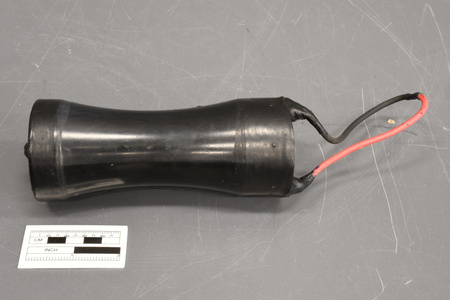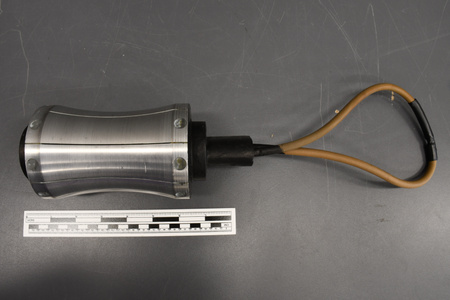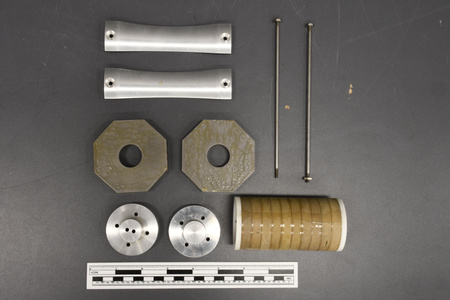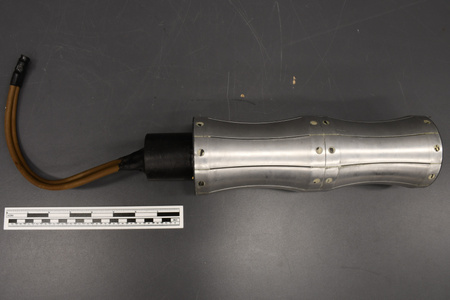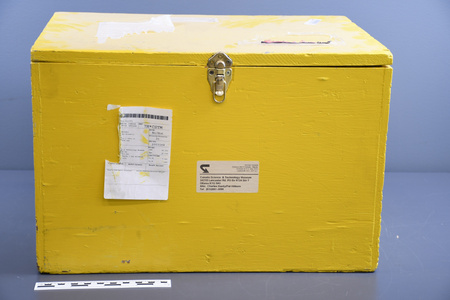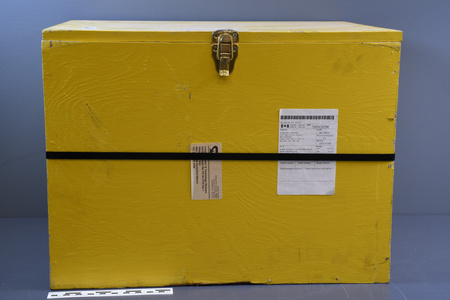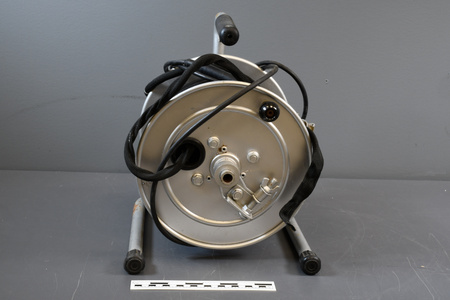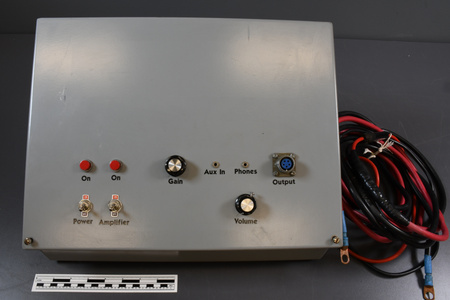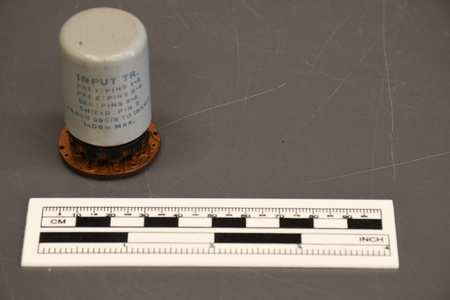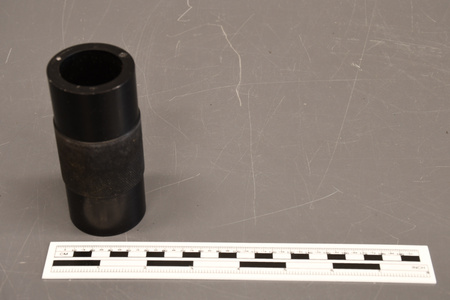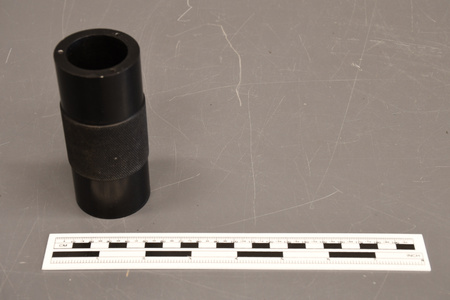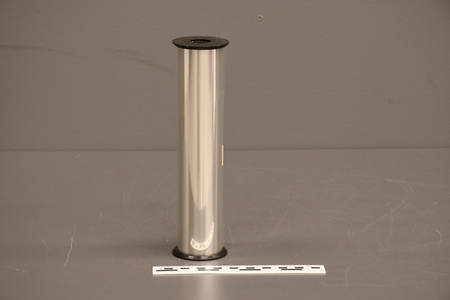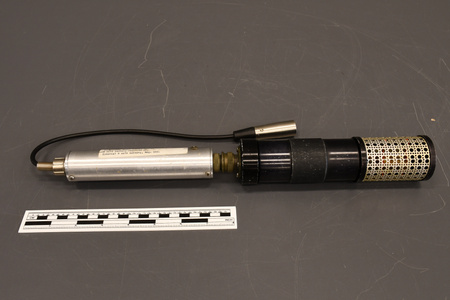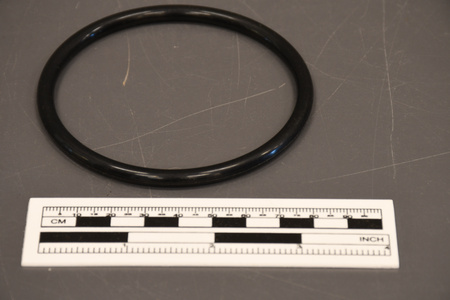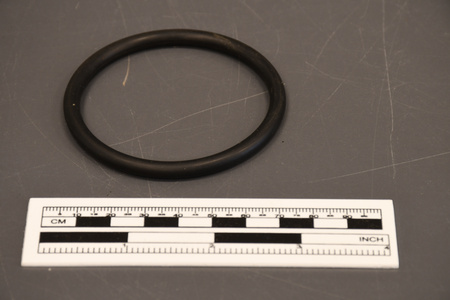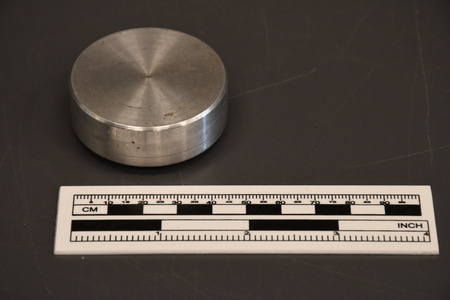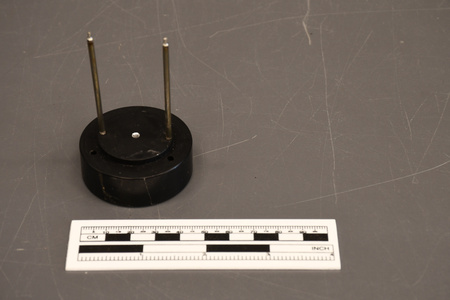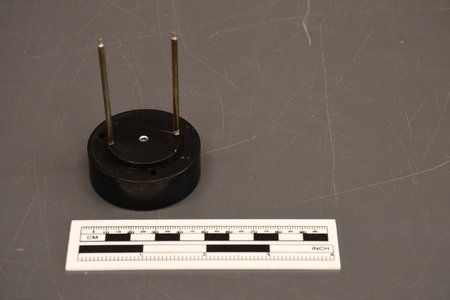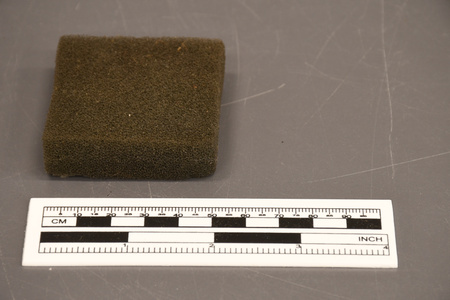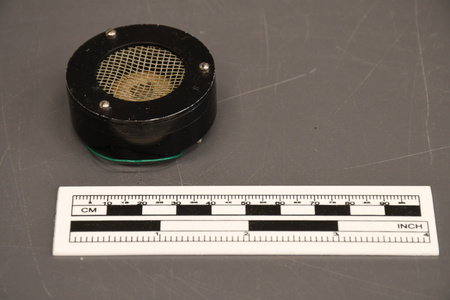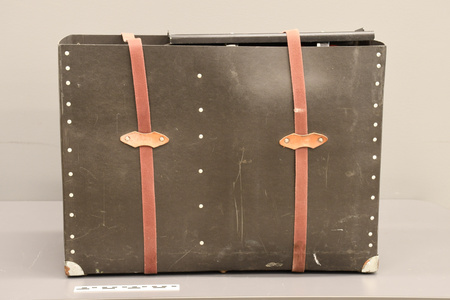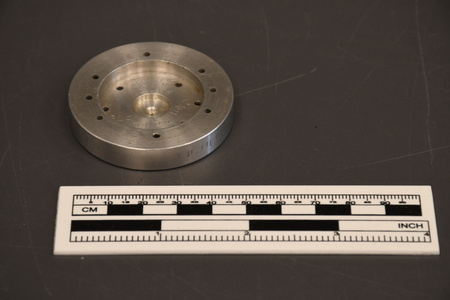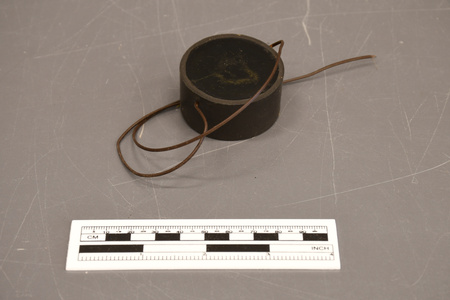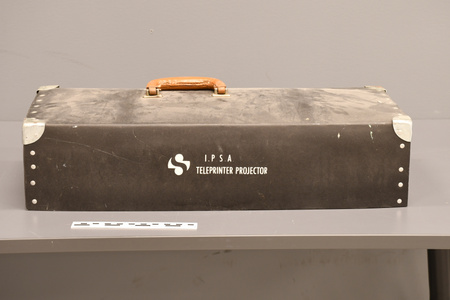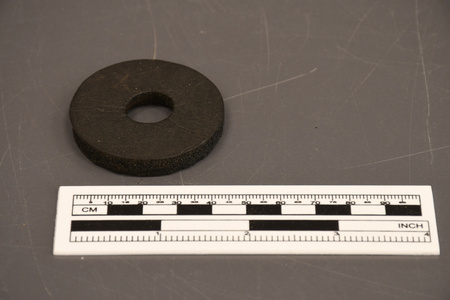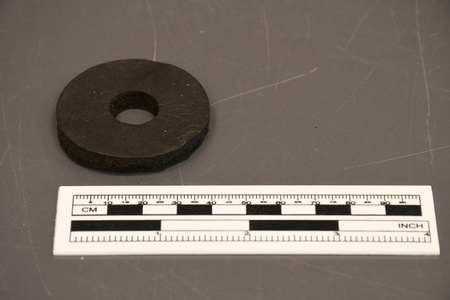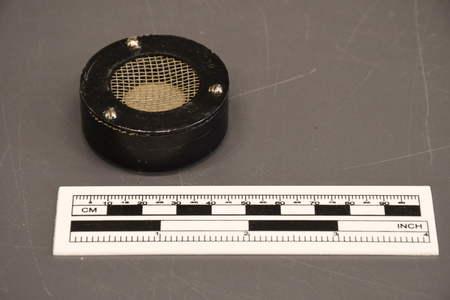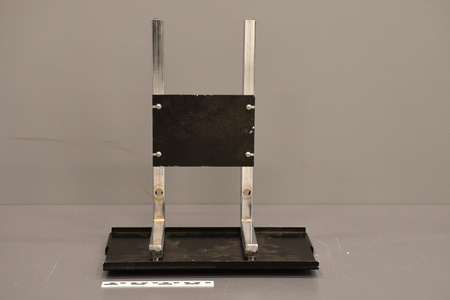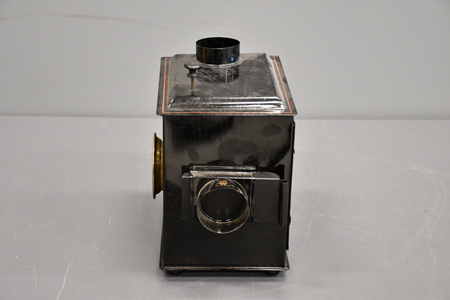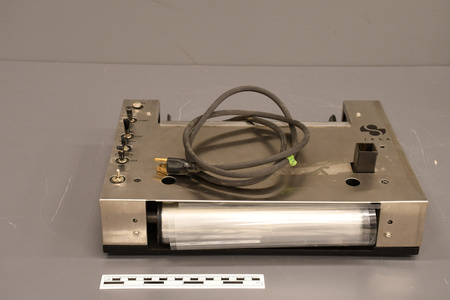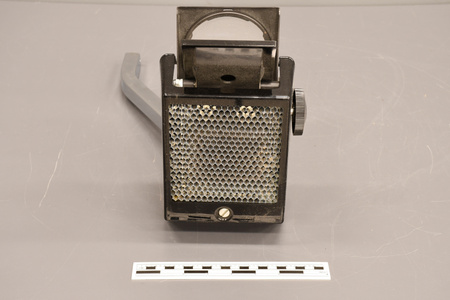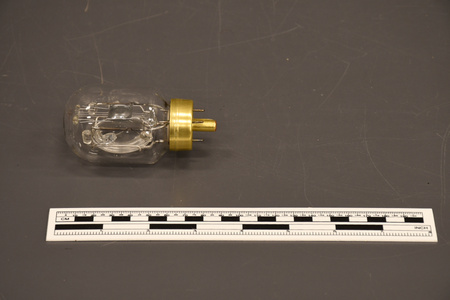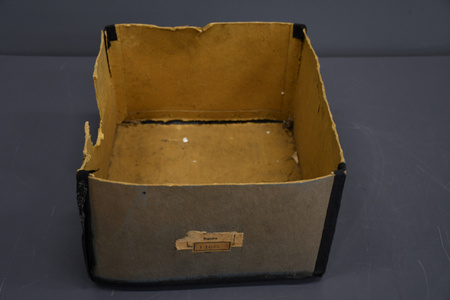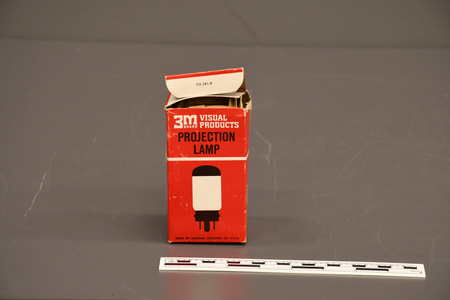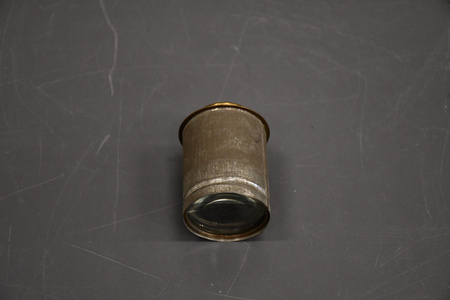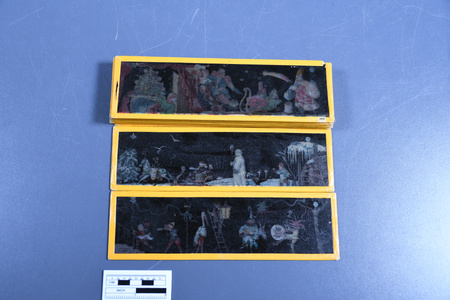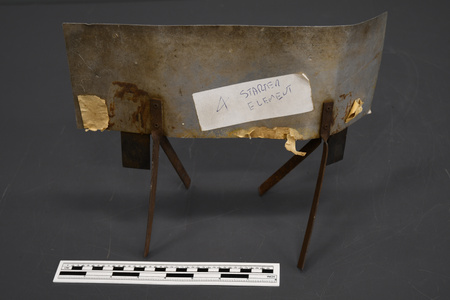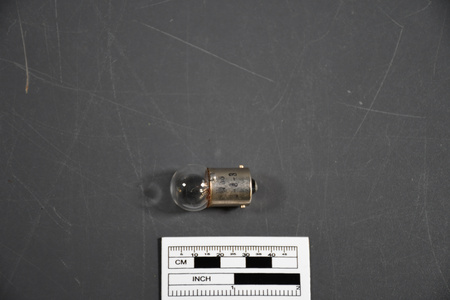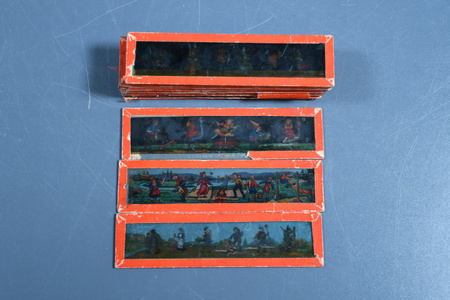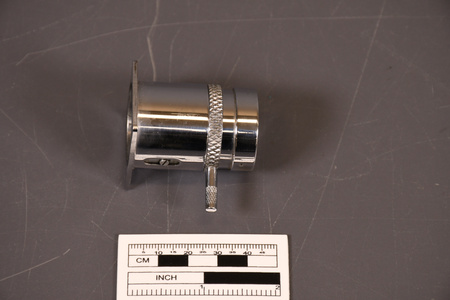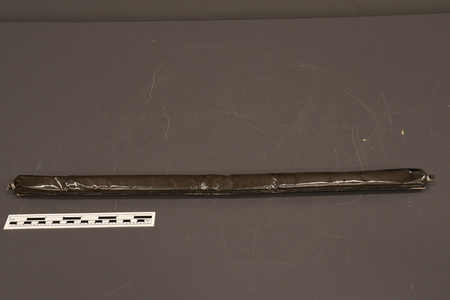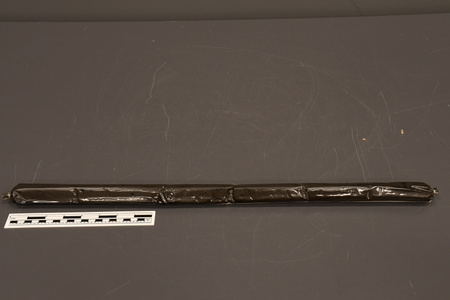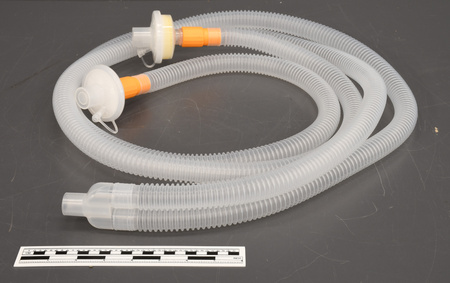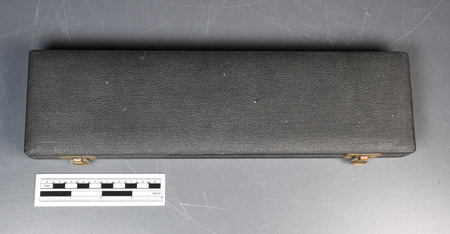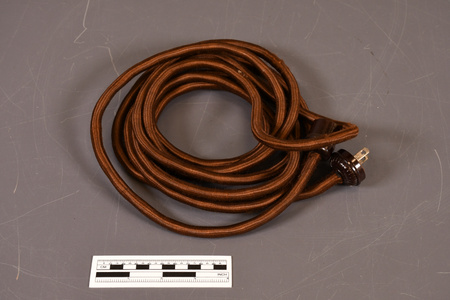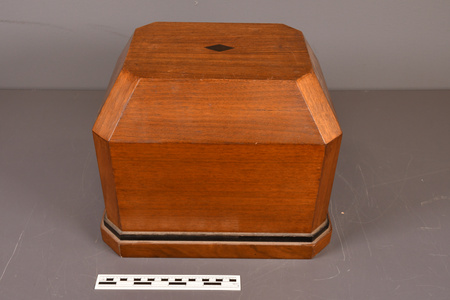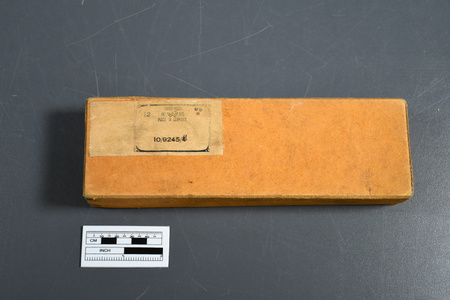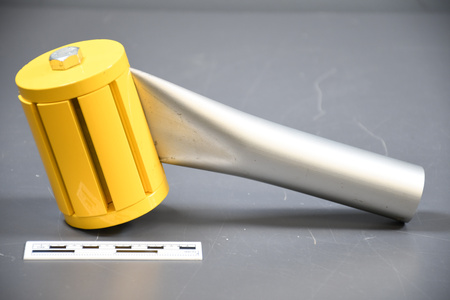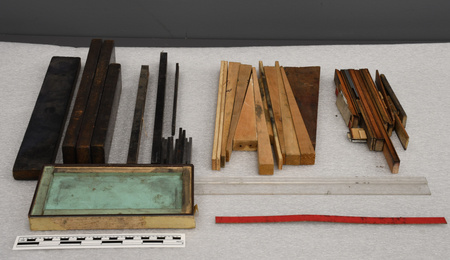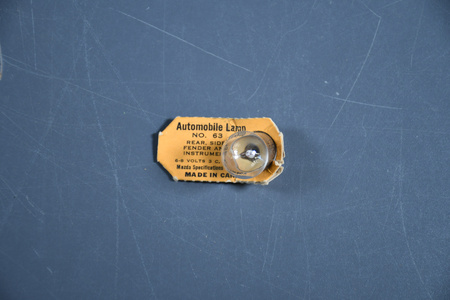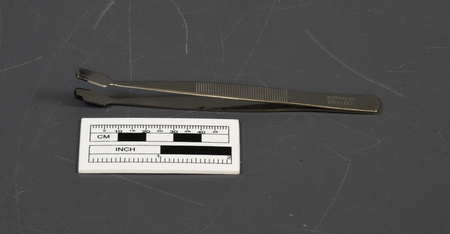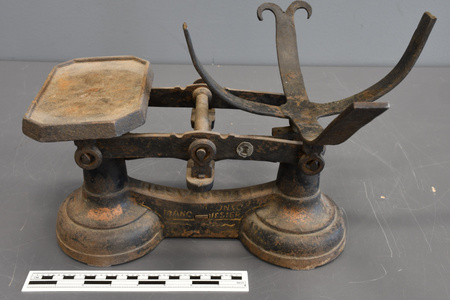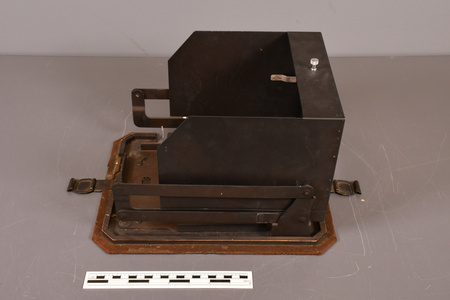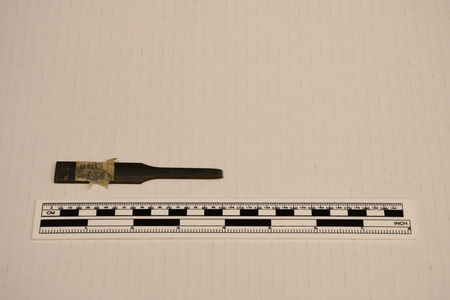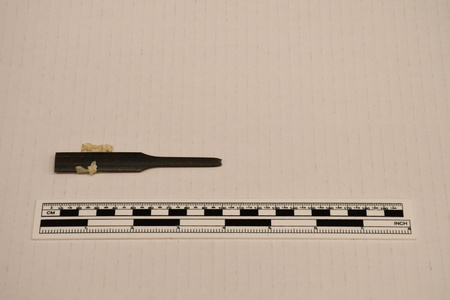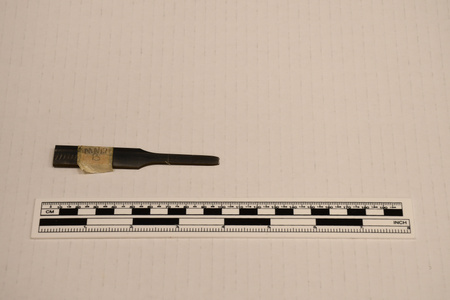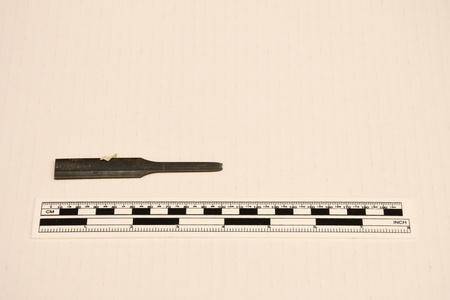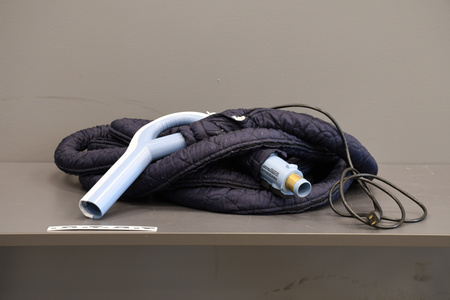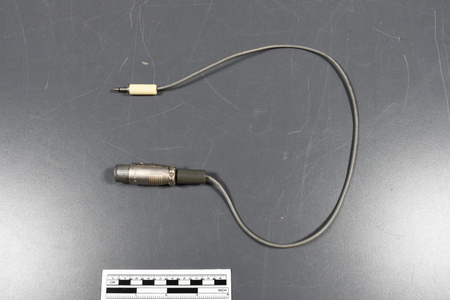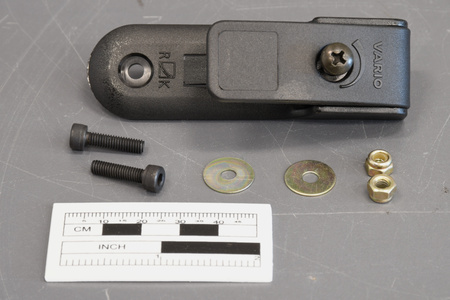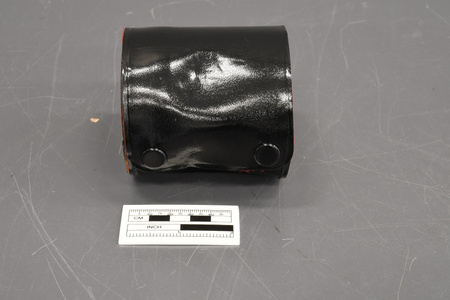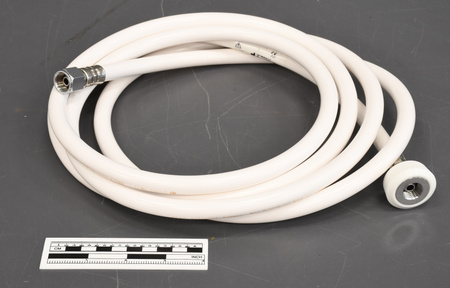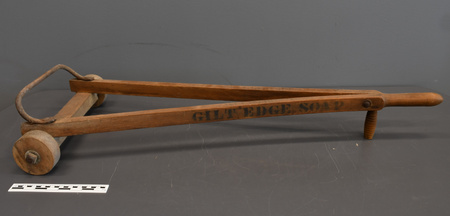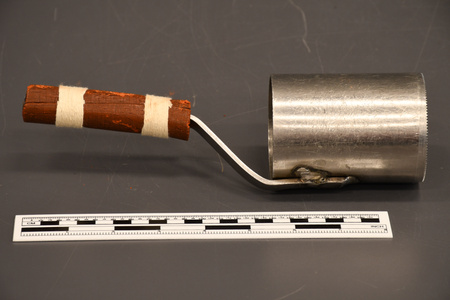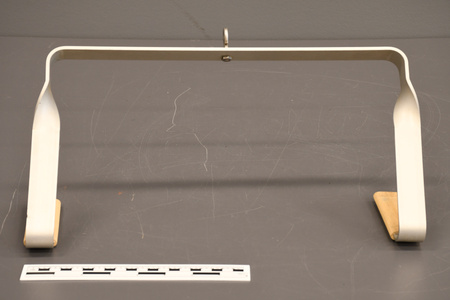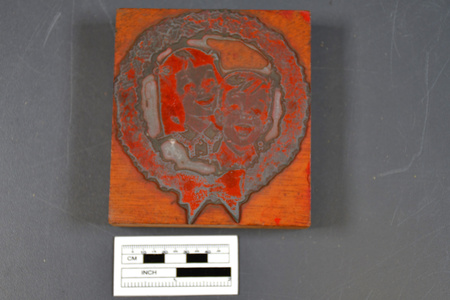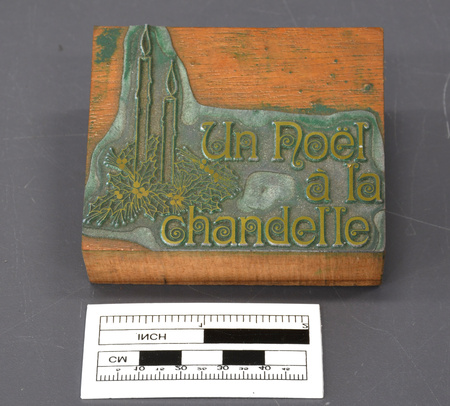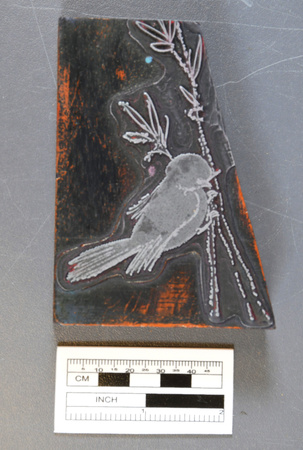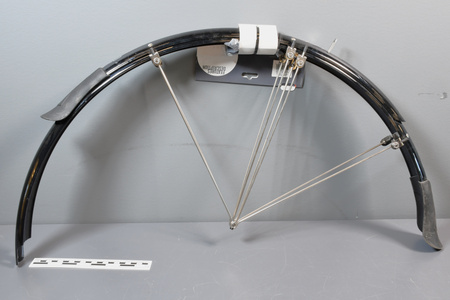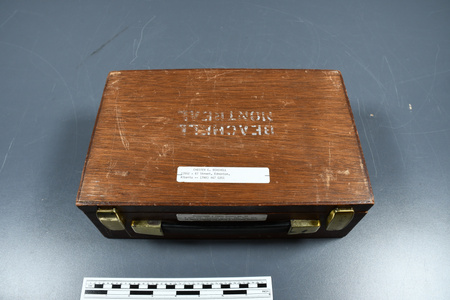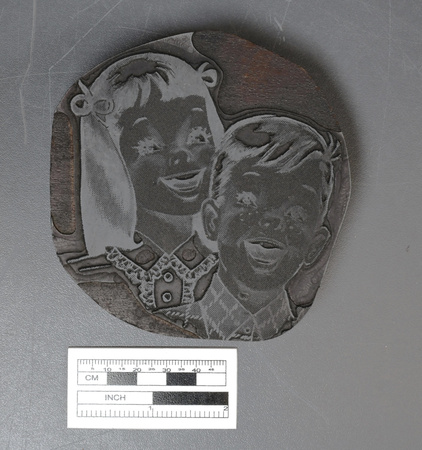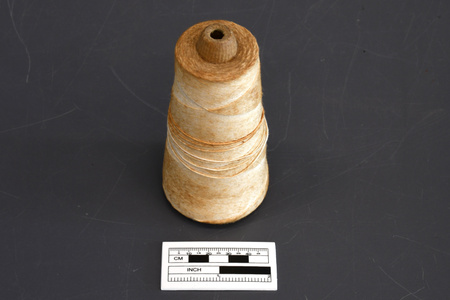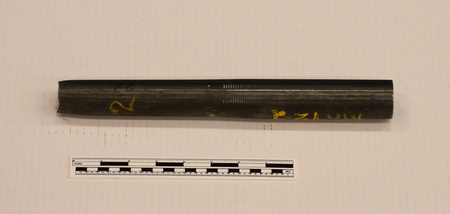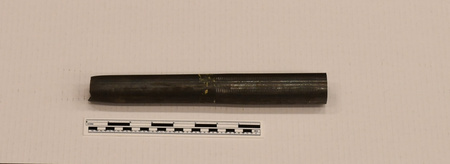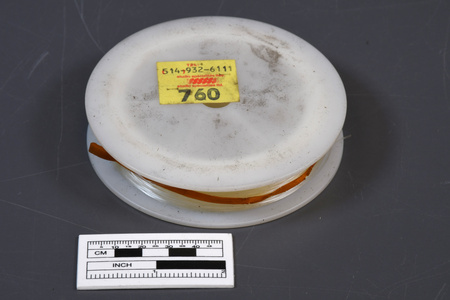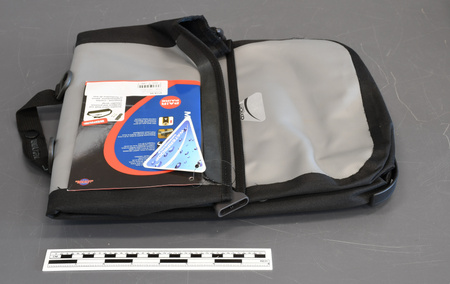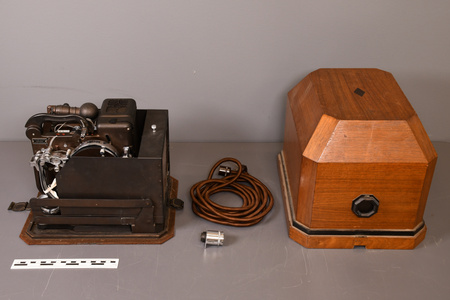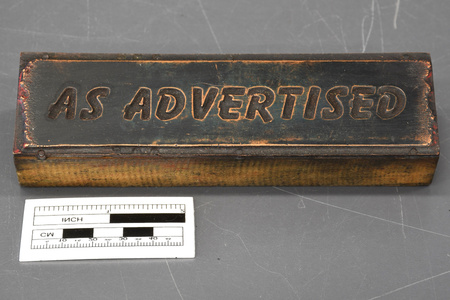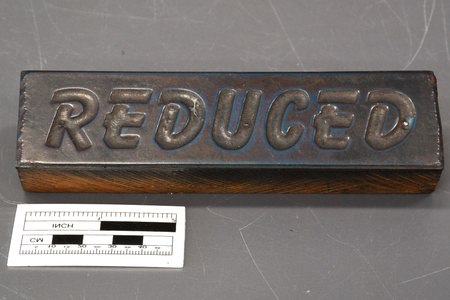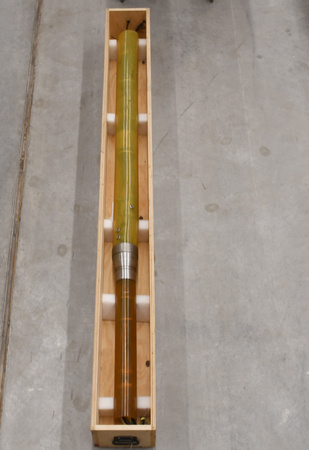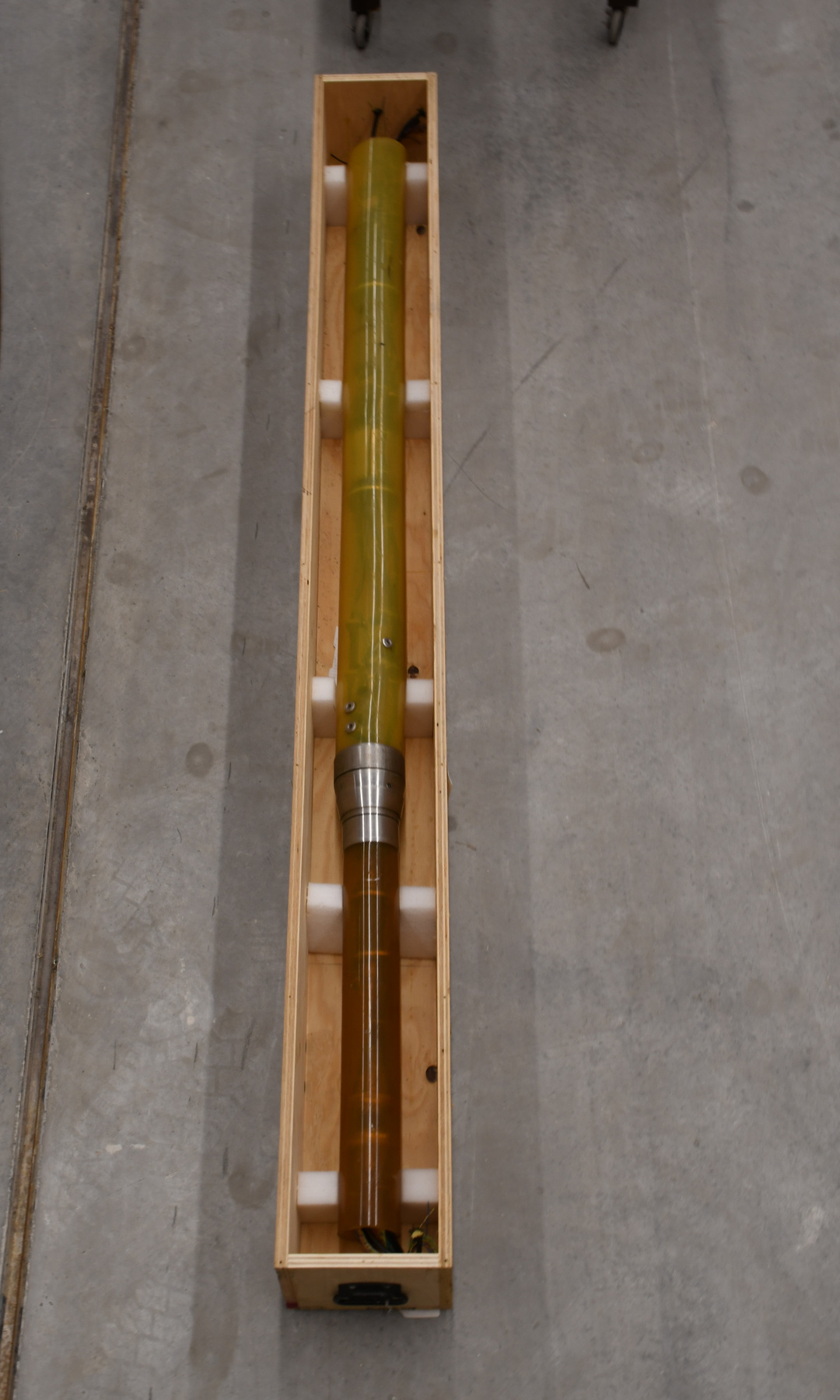Towed array
Use this image
Can I reuse this image without permission? Yes
Object images on the Ingenium Collection’s portal have the following Creative Commons license:
Copyright Ingenium / CC BY-NC-ND (Attribution-NonCommercial 4.0 International (CC BY-NC 4.0)
ATTRIBUTE THIS IMAGE
Ingenium,
2003.1164.001
Permalink:
Ingenium is releasing this image under the Creative Commons licensing framework, and encourages downloading and reuse for non-commercial purposes. Please acknowledge Ingenium and cite the artifact number.
DOWNLOAD IMAGEPURCHASE THIS IMAGE
This image is free for non-commercial use.
For commercial use, please consult our Reproduction Fees and contact us to purchase the image.
- OBJECT TYPE
- transducer/section
- DATE
- Unknown
- ARTIFACT NUMBER
- 2003.1164.001
- MANUFACTURER
- DEFENCE RESEARCH AND DEVELOPMENT CANADA (DRDC) - ATLANTIC
- MODEL
- Unknown
- LOCATION
- Dartmouth, Nova Scotia, Canada
More Information
General Information
- Serial #
- N/A
- Part Number
- 1
- Total Parts
- 1
- AKA
- N/A
- Patents
- N/A
- General Description
- An object comprised of metal and synthetic components/Un objet fait avec des éléments en métal et synthétique.
Dimensions
Note: These reflect the general size for storage and are not necessarily representative of the object's true dimensions.
- Length
- 240.0 cm
- Width
- 15.5 cm
- Height
- 16.5 cm
- Thickness
- N/A
- Weight
- N/A
- Diameter
- N/A
- Volume
- N/A
Lexicon
- Group
- Communications
- Category
- Sound
- Sub-Category
- N/A
Manufacturer
- AKA
- Unknown
- Country
- Canada
- State/Province
- Nova Scotia
- City
- Dartmouth
Context
- Country
- Canada
- State/Province
- Nova Scotia
- Period
- Unknown
- Canada
-
The sonar transducer is a Canadian technology that originated in the 1980s at the Atlantic division of DRDC (Defence Research and Development Canada) and continues to influence several R&D programs for the Canadian Navy today. The sonar transducers were patented in 1991. Barrel-stave transducers have played a role in at least 26 DRDC Atlantic sea trials and nine joint trials with the Canadian Navy and Dalhousie University in Halifax. These compact devices were incorporated into low frequency active towed arrays and submarine communication buoys, and have also been deployed under the ice in Canada’s north to support the development of rapidly deployable surveillance systems. Le transducteur sonar est une technologie canadienne qui date des années 1980. Il était conçu par DRDC Atlantique (une division de Defence Research and Development Canada) et même aujourd'hui il continue d'influencer plusieurs programmes au R&D pour la Marine canadienne. DRDC a testé les prototypes des transducteurs sonars et ils ont été breveté en 1991. Les transducteurs de douves ont joué un rôle clés en pas moins de 26 essais en mer de DRDC Atlantique et en neuf procès conjoint avec la Marine canadienne et l'université Dalhousie à Halifax. C'est dispositif compact était incorporé à des réseaux remorqués à basse fréquence et des bouées de communication à sous-marin. Ils ont aussi été déployée sous la glace au nord du Canada pour appuyer le développement des systèmes de surveillance. - Function
-
Towed array sonar transducers are used to both receive and transmit acoustic energy. These objects can be used to detect objects emitting low frequency underwater as well as pinpoint their location at long range. Les transducteurs sonores à réseau remorqué sont utilisés pour transmettre et recevoir de l'énergie acoustique pour la détection et la localisation des objets émettant des fréquences faibles sous l'eau à longue portée. - Technical
-
In general, underwater transducers can be divided into two fundamental types: hydrophones and projectors. Hydrophones are used for sound reception and are often designed to have a flat response over a wide frequency band below their resonance frequencies. Projectors are sound transmitters that are normally driven near their resonance frequencies for maximum acoustic power output. Depending on the design specifics, some transducers can be used as both hydrophones and projectors. Although piezoceramic-driven flextensional transducers fall into this dual-use category, they are most often employed as high-power projectors. They also helped biologists’ study acoustic whale communications. Généralement les transducteurs subaquatiques peuvent être divisées en deux catégories : les hydrophones et les projecteurs. Les hydrophones sont utilisés pour la réception au son et ils sont conçus pour avoir une réponse uniforme pour une grande bande de fréquences sous leur propre fréquence de résonance. Les projecteurs sont des émetteurs de son. Ils fonctionnent à un rythme proche de leur fréquence de résonance maximale pour s'assurer d'avoir une puissance acoustique de sortie le plus élevé possible. Tout dépend du modèle et ces spécifications, des transducteurs peuvent être utilisés doublement comme un hydrophone et un projecteur. Les transducteurs d'extension flexible fait en piézo-céramique tombe dans cette catégorie et ils sont souvent employés comme des projecteurs à haute puissance. Ils sont aussi utilisés pour aider les biologistes à étudier communications acoustiques des baleines. - Area Notes
-
Unknown
Details
- Markings
- None apparent/L'objet n'a pas de marque.
- Missing
- None apparent/L'objet a toutes ces pièces.
- Finish
- The body of this artifact is a synthetic tube that is brown on one end and yellow on the other. Both sections of the tube are held together with a metal coupler. Inside the tube are two metal transformers, two metal transducers, a regulator and a multitude of synthetic cables. Le corps de l'artéfact est fait avec un tuyau synthétique. Le tuyau est brun d'un côté et il est jaune de l'autre bord. Les deux sections du tuyau sont tenues ensemble avec un accessoire de couplage fait en métal. À l'intérieur du tuyau il y a deux transformateurs en métal, deux transducteurs en métal, un régulateur et aussi plusieurs câbles synthétiques.
- Decoration
- N/A
CITE THIS OBJECT
If you choose to share our information about this collection object, please cite:
DEFENCE RESEARCH AND DEVELOPMENT CANADA (DRDC) - ATLANTIC, Towed array, Unknown Date, Artifact no. 2003.1164, Ingenium – Canada’s Museums of Science and Innovation, http://collection.ingenium.ca/en/id/2003.1164.001/
FEEDBACK
Submit a question or comment about this artifact.
More Like This
